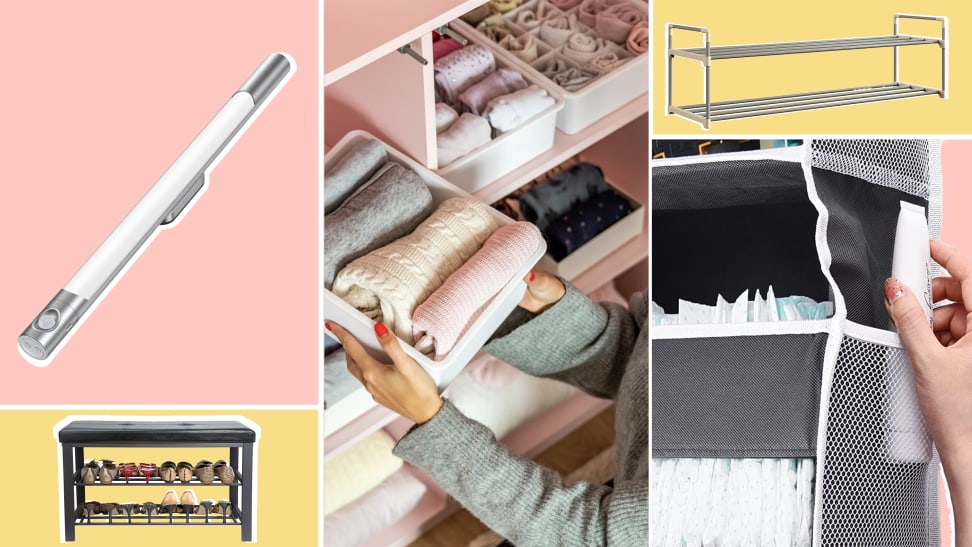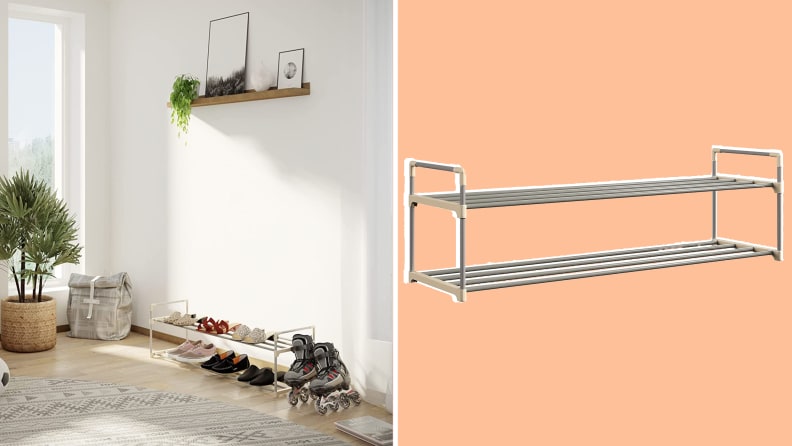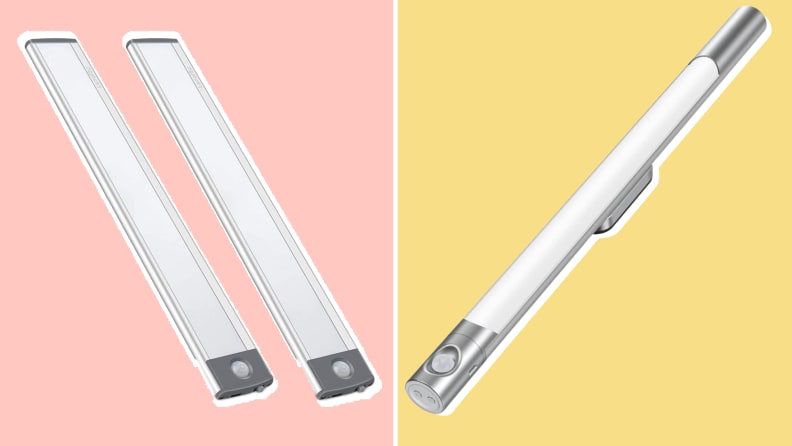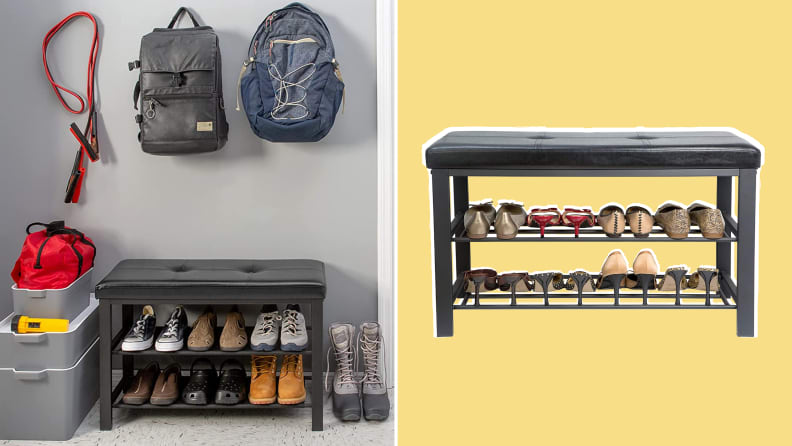5 expert closet organization ideas for seniors
A disorganized closet can be deceptively dangerous
 Credit:
Reviewed / Lofter-pro / Simplify / Getty Images / Kostikova / Home-Complete / ULG
Credit:
Reviewed / Lofter-pro / Simplify / Getty Images / Kostikova / Home-Complete / ULG
Recommendations are independently chosen by Reviewed's editors. Purchases made through the links below may earn us and our publishing partners a commission. Prices were accurate at the time this article was published but may change over time.
Bathrooms and kitchens are among the most dangerous places for seniors aging in place because those rooms tend to have the most slip hazards. That said, knowing how to organize your closet can also prevent falls or accidents in unexpected places, too. From the bedroom to a coat closet, here are five tips from professional home organizers to create a closet system that makes sense for all.
1. Look down

The Home-Complete shoe organizer uses a simple design to keep your shoes and sneakers on display.
“You need to declutter so there’s nothing on the floor to trip over,” says Corliss C. Wood, a California-based professional organizer with many senior-age clients. “And even if you might not have anything on the floor, clutter can cause things to fall—which can be especially dangerous when you don’t see it because the door is shut.”
Both she and Julie Coraccio, a professional organizer and certified life coach in West Virginia, advocate for storage solutions that make visible closet floors possible and a purge of unnecessary clothing and accessories, like that old bowling trophy or duplicative outfits. “It’s valuable for seniors to pare down their wardrobe,” says Coraccio. Do you really need 10 dresses for categories like church, everyday, and social activities?”
Eliminating the burden of “extras,” especially when organizing clothes, eases the burden of additional items to lift and makes it easier to see smaller items when they’re not jammed in, Coraccio says. Adding a simple shoe organizer can clear up the floor considerably.
2. Watt a view

Lights that are activated by movement conserve energy while not in use and are a great way to catch fall hazards that may be hidden in the dark.
Amping up the lighting in closets is key to safety and convenience, say the organization gurus.
Coraccio and Wood recommend motion-sensor light strips that are easy to install and require little maintenance. Traditional lighting—with a pull chain to grasp or a switch to fumble for—requires more dexterity and hand strength for seniors. With a motion sensor light, just opening the closet door will help illuminate a small space in seconds.
3. Minding the store
Another of Coraccio’s favorite product lines for hanging clothes works well for seniors who are shorter or have accessibility constraints that limit bending our stretching. The Automated WardrobeLift from Storage Motion is motorized to bring rods toward the person opening the closet by touching a button. Clothes from the back of the closet come to the front via the ClothesCarousel set of revolving closet rods from Storage Motion.
For those who need to store clothing items in bins instead of closet shelves, Wood says that “sometimes more is more.” Rather than have larger bins that are too full—and thus too heavy to easily lift—a larger number of smaller clear bins with easy-to-grasp handles is the way to go, she says. Ideally, those should never be above shoulder height, and should be pushed to the back.
From clothes to photographs, Wood says she always recommends moisture-wicking beads for any items stored in plastic bins.
4. Support system

Even when supported by an accessible slip-on or Velcro shoe, seniors may still benefit from storage-based stability in closets—just in case.
Seniors lucky enough to have a walk-in closet should consider a bench that’s open at the bottom for additional storage, and to take a quick rest “just in case,” says Coraccio. One of her favorites is from the Simplify line.
For others who need more stability or objects to grasp for support, Coraccio often advocates for built-in storage space in closets. “Built-ins are preferable over something more modular if seniors need to steady themselves on something stable,” she says. Contractors from the Certified Aging-in-Place Specialist (CAPS) program have training in home modifications for senior citizens.
5. Mirror, mirror

Mesh compartments make it easier to view stored away objects so they can be easily retrieved.
Seniors who need more hanging space often greatly benefit from over-the-door organizers with clear or mesh pockets, says Coraccio. They’re a small investment and only have to be filled in the pockets that are easiest to reach.
The vertical organizer has allowed Coraccio to follow her own advice—the mirror that was formerly behind the door of her closet has been replaced by a hanging jewelry cabinet. The wall-mounted cabinet doubles as a full-length mirror when closed. “It’s decorative and does double duty. If you’re short on space this might be a good option,” she says.





